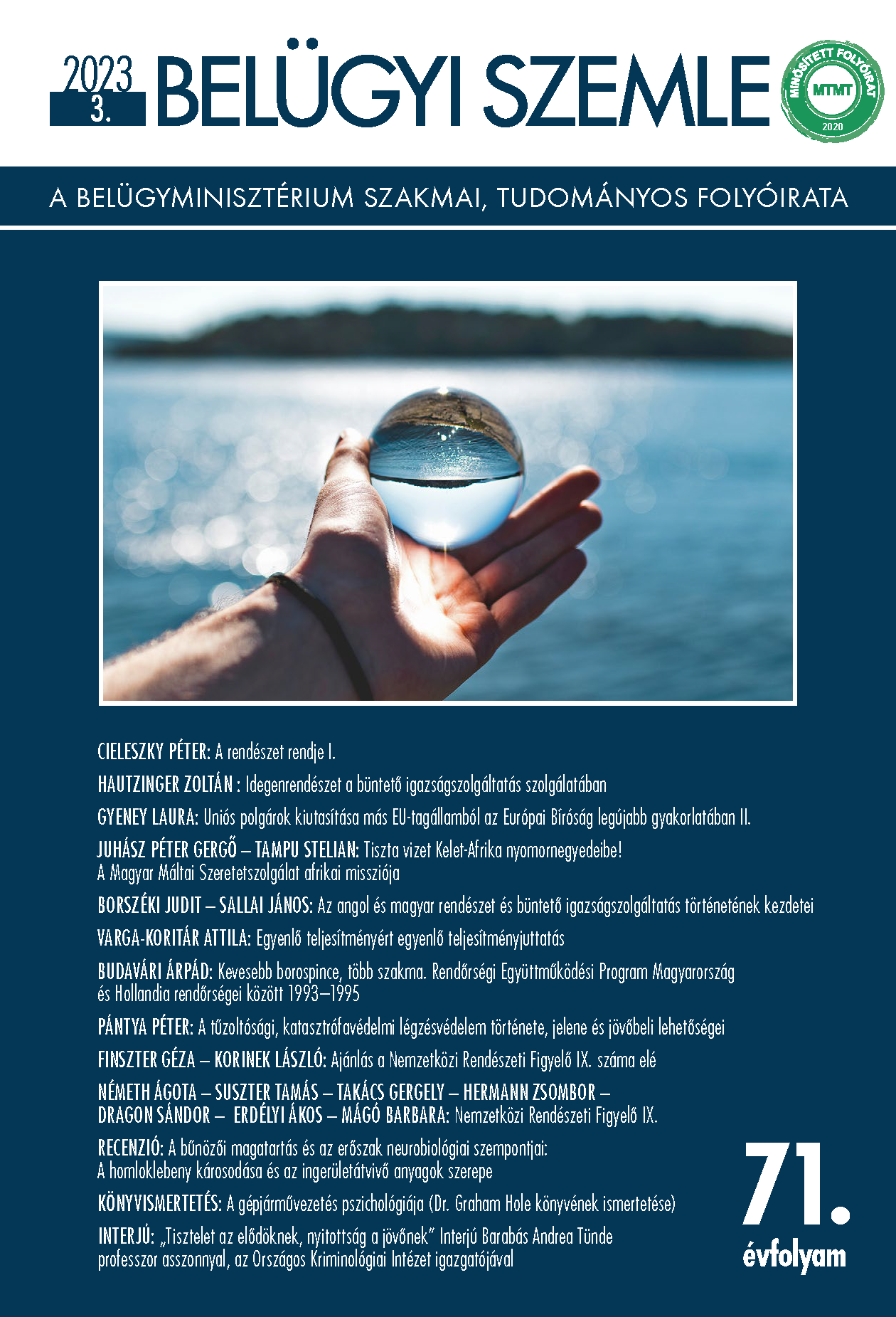Abstract
Aim: Intervention activities in fire and disaster management areas typically take place in a damaged environment that is hazardous to occupants. The composition, pollution and oxygen content of the air, which has a direct impact on the tactics, methods and personnel conditions of intervention, can be a major source of danger during firefighting, technical rescue or disaster relief operations. There was no significant difference in these damage conditions in the recent (last decades) and more distant (‘hundred years’) past, however this is a very under-researched and under-publicised area. If necessary and possible, the air at the scene of the damage has always had to be isolated from the fire-fighting forces, as centuries of research have shown. The aim of this article is to explore the past in this aspect and to summarise the available Hungarian and international literature. Compressed air respiratory protection is mainly applicated in the fire service field, hence the focus of this article too. The general firefighting environment, the contingency at the scene of the fire, and the circumstances of interventions requiring respiratory protection are described. This will be followed by a review of the more distant and then more recent past solutions, describing the historical and, as they have evolved, the current national and international technical environment in the field of respiratory protection.
Methodology: In the article, the current research results of national and international authors in the field under study and the scarcity of available research were analysed by using literature search.
Findings: The research and this publication will review the past solutions and historical developments in firefighter respiratory protection that have led to the capabilities used nowadays.
Value: This summarizing work can be considered as a niche work, especially few researches and writings in Hungarian language deal with the field of firefighting, the early possibilities of respiratory protection.

